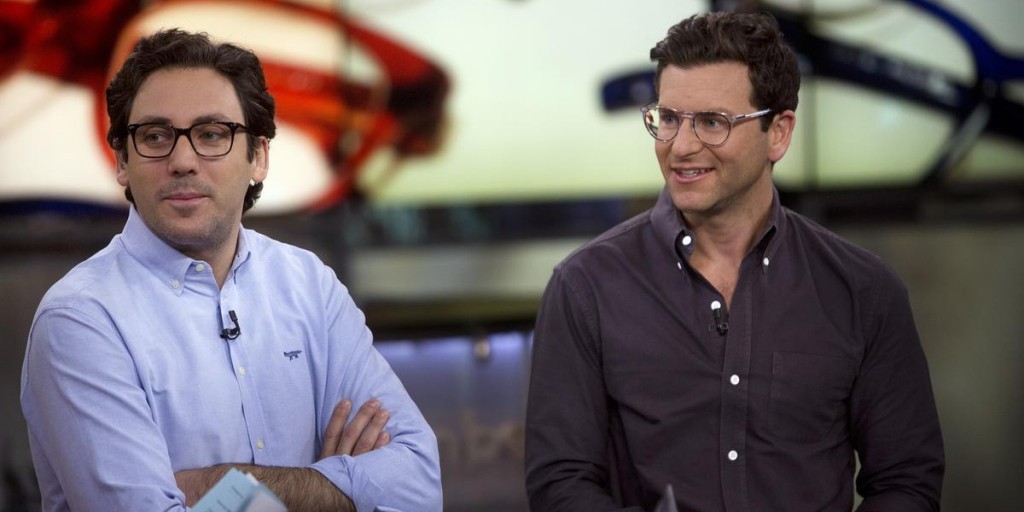NEW YORK — Two big names in New York State politics showered Warby Parker’s new optical lab with blessings when it opened in the Hudson Valley this month. And from the looks of it, New York Governor Andrew Cuomo and Senator Charles Schumer clearly both lobbied co-founders Dave Gilboa and Neil Blumenthal hard to make sure the Manhattan-based unicorn kept its first industrial facility in-state. Mission accomplished.
They sure did sound happy about the whole thing too:
Here’s Governor Cuomo: “Warby Parker’s lens-making facility will usher new economic vitality into Rockland County, creating high-paying, skilled labor jobs and investing millions of dollars in the region. . . . Warby Parker’s choice to expand in New York confirms that there is no better place than the Empire State to grow an innovative, cutting-edge business.”

This is a win-win for both parties. Warby Parker brings optimism and attention to an industrial town that needs both, while pledging to create 128 new jobs in New York over five years. In return, it gets around a $1.32 million tax credit from the state for sticking with them. Good PR, better control of its supply chain, and a tax break? A no brainer.
Savvy entrepreneurs that they are, Gilboa and Blumenthal know a sweet deal when they see one. Understand, though — there are larger goals at play here beyond rubbing shoulders with elected officials.
Anyone looking to really understand where this new lab fits into the WP machine would be well served to look past the obvious purpose of the facility, which is to handle prescription lenses in-house and get them to customers faster.
Yes, the lab provides a more efficient, personalized supply chain. And yes, it allows for a more fully-vertical, self-sufficient system. But you might say those are secondary benefits. The real purpose — fortifying WP against both Amazon’s increasing direct-to-consumer sprawl, as well as Luxottica’s ongoing dominance — is what’s driving this.
How so?
It gives them a leg up against Amazon’s private label brands.
Amazon, in sensing a new chance to tap into the DTC opportunity, has been launching (and shuttering) a series of private label apparel brands with names that borrow from the naming patterns of many independents. Think: Lark & Ro, Scout + Ro, and Franklin Tailored. All of these, however, lack the soul that independent upstarts have. Amazon has the means to be able push these types of brands out ad infinitum — and replace them with others if they fail. But what it’s not focusing on is personalization and individualized products. The upstarts that are able to leverage their ability to offer personalized goods to their shoppers will find themselves in fine shape. WP’s facility helps them out here.
It also helps them against the $54B Luxottica and Essilor merger.
The opening of the lab is certainly well-planned, given last week’s announcement of Luxottica’s merger with French lens-making giant Essilor. Rumors of the possible merger have been swirling for years. Now that it’s pending, it only makes Luxottica an even bigger behemoth. Close to 90 percent of eyewear sales happen in-store — not online — and this is Luxottica’s forte. Adding a lens-making firm to the mix only concentrates their power even more. WP’s new lab, in making the upstart more vertical, also makes WP more resilient to developments like this.
Depending on how you look at it, the new lab is either a defensive or an offensive play for WP. Which might make it true when they say that the best defense is to play offense.






